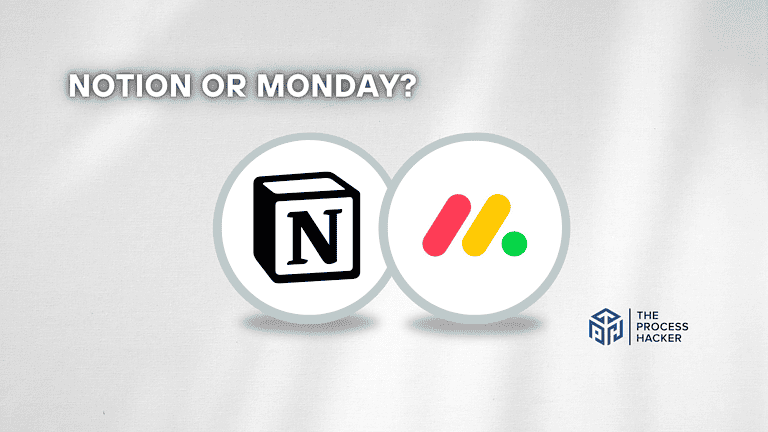What is Systems Thinking?
Success does not come easy. You pour countless hours and endless effort into your career or company, yet sometimes, it still feels like things could be running smoother.
This is where systems thinking comes in – a powerful concept that can transform how you approach problem-solving and decision-making within your organization.
If you’re tired of constantly putting out fires and want to take a more proactive approach to managing your business, then this blog post is for you! We’ll explore systems thinking, its crucial role in business, and how you can implement it today to see actual results tomorrow.
Let’s unlock the secrets of systems thinking so you can succeed in this crazy world!
What is a System?
Systems are everywhere—in your car, your life, and the world around you.
When you examine the systems that govern your life, world, and business, you can control them to work for you. We can use systems thinking as a framework to think critically about and solve problems that arise in our lives and businesses.
First, let’s define a system before we dive into more in-depth on the topic:
A System is defined as:
- A set of things working together as parts of a mechanism or an interconnecting network.
- A set of principles or procedures according to which something is done; an organized framework or method.
From the first definition, system thinkers describe the parts of a machine that are used to work with the same consistency. We can observe refrigerators as systems to cool our food down to an exact temperature every time.
From the second definition, a systems thinker can see that a “system” describes the processes that people or organizations utilize to achieve a particular mission. We can observe the local government as a system of people working to decide how to spend taxpayer money.
Thus, systems are organized structures of things or people to achieve a specific SMART goal. We can examine a system either externally or internally using the concept of systems thinking.
What is Systems Thinking?
Systems thinking is a method of analyzing the system to understand the system and solve problems that result.
We will examine the complex system as a whole, its constituent elements, internal processes, and the relationships within. When we step back, we can see that we are all a part of various systems that exist in the world.
The External Systems Thinking Perspective
First, we can look at the system externally as a black box. In engineering, science, and computing, the term “black box” is used to describe a system that can be viewed in terms of its inputs and outputs without any knowledge of its internal workings.
External Systems Thinking Tools & Characteristics
This external system can be broken down into the following main characteristics (shown in the image below):
- Input – what is put in, taken in, or operated on by any process or systems mapping.
- Process – a series of actions or steps taken to achieve a particular end.
- Output – the amount of something produced by a person, machine, or industry.
- Feedback – information about reactions to a product, a person’s performance of a task, etc., which is used as a basis for improvement.
From the outside, we can view most objects in your home or work as systems. These devices require an input of power to produce an output of work.
Example: Air Conditioning (AC) Units
For example, AC units are commonly used to cool rooms in many buildings. Let’s say we just moved into an apartment building. This building requires us to buy and install AC units in our windows to cool our rooms.
External System Breakdown
- Inputs:
- Power: The AC unit requires an input of power to operate, so we plug the system into a wall outlet.
- Desired Temperature Setting: Then, we have to set the input of the temperature to 20°C, as this is our desired room temperature.
- Current Room Temperature: The unit reads the current room temperature of 25°C as an input.
- Air: Lastly, the unit takes in the air, as an input to change the temperature in the room.
- Process: The AC unit is the black box system that takes in air from the house and cools the air down. We view the AC unit as a black box as we don’t know how the AC unit works to cool the air down. We simply plug in the system and expect it to cool our room down.
- Output: The result after the AC switches on, with cold air flowing out to lower the room temperature from 25°C to 20°C eventually.
- Feedback: The AC unit continuously reads the room’s air temperature. When the house temperature reaches 20°C, the AC is turned off, and no more air is taken into the system.
Applying Systems Thinking
Let’s analyze a problem using the systems thinking approach from an external perspective. Suppose we wake up sweating in a hot room. We realize that our AC stopped working in the middle of the night and is not on.
We can analyze the characteristics of the system to solve the problem:
- Outputs: First, as systems thinkers, we realize that the AC unit does not output cold air to lower the temperature of the room to what we want. We recognize that there is a problem with our machine as it is not working correctly.
- Inputs: We look at our inputs and realize that our dog knocked the power cable out of the wall outlet. We simply plug the power cable in to supply the missing input to the AC unit, and it works. This situation is pretty common, as most machine-related issues are due to a loss of power or resetting of the power.
- Process: We have checked all the inputs to the AC unit, and they seem to be okay. Thus, we realize that there is an issue with the AC unit’s air processing. The air is taken in and comes out at the same temperature. As we view this unit as a black box, we don’t know its internal workings. Thus, we can employ an expert or handyman to fix our AC unit.
- Feedback: Suppose that our AC unit seemed to be working fine, but then it kept cooling the room beyond the desired temperature. We realize that the system is not using the feedback of the room temperature to know when to shut off automatically. This situation is also an issue with the process, and we can again call a handyman to fix our AC unit.
The Internal Systems Thinking Perspective
Second, we can look at the system internally.
Internal Systems Thinking Tools & Characteristics
The system can be broken down into the following main characteristics (shown in the image below):
- Environment – the surroundings or conditions in which the system lives or operates.
- Boundary – the line that marks the limit of the system from the environment; this boundary can be open or closed to the environment.
- Subsystem – a self-contained system within the larger system.
- Component – a part or element of a subsystem or the more extensive system
- Interconnection – how each of two or more components or subsystems is related to the others.
It is common to examine devices or organizations of people as systems from the inside. We are now demystifying the “black box” to understand the inner workings of the system as a whole, its subsystems, its components, and its interconnections.
Example: Hotel Management
For example, we can internally view a hotel as a system from a management perspective.
In management, we are directly involved in the process of dealing with or commanding people in the hotel. The goal of management is to provide its customers with a quality place to stay and generate revenue for the hotel.
Internal System Breakdown
- Environment: For the systems analysis, we can examine the hotel operating within the context of a city or town’s local economy.
- Boundary: The hotel is separated from its environment by the land boundaries within which the hotel sits. This identifies the hotel as a separate property from the neighboring buildings and land. The boundary is open to the environment, as people, goods, and power pass through the hotel grounds every day.
- Subsystems: Many subsystems exist within the hotel. The organization of the staff can be further broken down into subsystems of departments, including the front desk, operations, housekeeping, and maintenance. The hotel room itself can also be a subsystem containing the components within it.
- Components: Following the example in the subsystem bullet, the elements that make up the hotel room subsystem include the bed, bathroom, AC unit, desk, and many more.
- Interconnections: Many interconnections exist within a hotel. Common examples include the interactions of employees and customers, relationships among the staff, and exchanging money for rooms and amenities.
Applying Systems Thinking
Utilizing systems thinking can significantly enhance strategic planning in hotel management. This enables the owner or manager to effectively address and solve common issues such as customer complaints, mismanaged room cleanings, and overbooking.
By adopting a systems-level approach, managers can gain deeper insights into the complexities of hotel operations and implement more effective solutions.
- Environment: Understanding the environment is crucial in systems thinking. Managers should consider external factors that impact the hotel, such as changes in tax rates or the construction of a competitor hotel nearby. This awareness helps in adapting strategic planning to better suit external pressures.
- Boundary: Analyzing the boundary involves looking at the changes in the hotel’s customer demographics concerning days of the week, holidays, or local events. This allows managers to anticipate fluctuations in demand and adjust services accordingly, ensuring better customer satisfaction and optimized resource management.
- Subsystems: Effective management of subsystems within the hotel is essential for smooth operations. For example, if a guest encounters issues with the air conditioning unit, the manager can ensure that the maintenance team addresses this as part of their systems work. This targeted response prevents minor problems from escalating and affecting the overall guest experience.
- Components: Each hotel component, such as room cleanliness, plays a vital role in the guest’s experience. Housekeepers utilize a detailed checklist to ensure every room is thoroughly cleaned and ready for new guests. If a problem arises, such as an inadequately cleaned room, the manager can inspect these components to determine if additional cleaning is needed, thus applying the core concepts of systems thinking concepts to maintain high standards.
- Interconnections: Understanding the interconnections between different components and subsystems is vital. For instance, if there is a conflict between the front desk staff and a guest, the manager can analyze this interaction to identify underlying issues and implement feedback loops to improve communication and service. This could involve training sessions that enhance customer service skills or revising protocols to better manage guest interactions.
- Causal Loop Diagrams: It can be beneficial to visualize these interconnections and how various elements within the hotel influence one another. By identifying and understanding these loops, managers can pinpoint leverage points where small changes could significantly improve overall efficiency and guest satisfaction.
Finally, incorporating different perspectives from staff across all levels can enrich the manager’s understanding and approach to problem-solving within the hotel. This inclusive approach ensures that all aspects of hotel operations are considered, leading to more comprehensive and effective systems-thinking applications.
By integrating these systems thinking principles and tools, hotel managers can transform challenges into opportunities for improvement, ensuring a more successful and smooth operation.
Final Thoughts on Systems Thinking

In conclusion, systems thinking may seem complicated at first glance. However, once you start applying it to your life, it’s actually quite simple and incredibly beneficial.
By understanding the interconnectedness of all things and taking a holistic approach to problem-solving, you can make better decisions and create positive changes in your life.
So, the next time you’re facing a challenge or trying to achieve a goal, take some time to step back and look at the bigger picture. Create a system of your thoughts and ask yourself how all the different pieces of the puzzle fit together and how they might influence each other.
Don’t be afraid to think outside the box or explore alternative solutions—sometimes, the most unconventional ideas can lead to the most innovative solutions. Remember, systems thinking is not just about finding one right answer but about embracing complexity and seeing things from multiple perspectives.
So go forth and apply systems thinking in your personal and professional life – who knows what incredible outcomes you might achieve!
So embrace this new perspective and see where it takes you – it just might surprise you in the best way possible!







